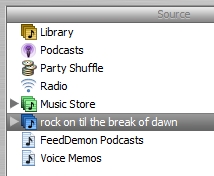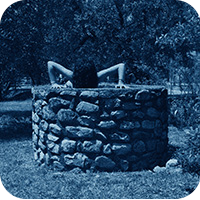Outlook detox

Been a little quiet around these parts. Two reasons. I’ve been battling a mutant sinus virus that caused a skull-crushing headache and a high-pitched ringing in my ears that still hasn’t completely gone away. (Sonically isolating myself in a float tank probably didn’t help, I admit in hindsight.) But really the blog went quiet because I was in the middle of a project that knocked my world completely off-kilter: changing personal information management software.
I’m no fan of Microsoft, but I have been saying for years that they actually got it right with Outlook. I’ve used Outlook on my primary machine (a PC) as a standalone PIM and e-mail client since 1998 and have loved it. But I’ve known for probably a year that I had to wean myself. Here’s why:
– Non-standard data formats. Moving your information from Outlook to anything else requires third-party software and a masochistic tolerance for inaccurate field mappings and system freezes. I can’t stand having such critical data in a proprietary format, especially one controlled by MS.
– There’s no easy way to view data on multiple platforms. And no easy way to view data, replicate it, or back it up online (since I don’t use Exchange).
– I’m completely enamored with Mozilla Firefox and the extensions to it from the open source development community. Thunderbird and Sunbird were calling me.
Moving off of Outlook was pure hell.
I decided I was going to tackle Thunderbird first. I had to extract several year’s worth of e-mail with attachments using a variety of filters and applications (Outlook2vCal and Outlook2Mac) to create mbox files. This was the least painful part of the transition and it took me days. Thunderbird isn’t quite as elegant as Outlook, but it is damn close and the extensions for it are superb. I route through Gmail now using POP forwarding so, in essence, I have online replication too. Thunderbird also integrates with Plaxo, the online contacts management service, so I have online replication there too. E-mail transition happiness: 99%.
Next up, calendar. Suffice to say that getting meaningful appointment data out of Outlook is tragicomedy. As in, one must laugh in order not to cry. I imported the data in Sunbird only semi-successfully. Sunbird left me wanting, though. It is not as mature or stable as Firefox or Thunderbird. So I took a completely different tactic, moving all my calendar and task data to Yahoo! This was an interesting experiment that ultimately failed. I like Yahoo! Calendar a lot, but after using it exclusively for a few days I knew I need a desktop calendar app too. The web just isn’t the best medium for sustained calendar manipulation. (Though an AJAX-powered calendar would probably be usable. Listening, Google?) Also, Yahoo! Calendar only replicates with Outlook. And I wanted to eradicate Outlook completely.
Back to Mozilla. I switched from Sunbird to Mozilla Calendar because it was slightly better integrated with Thunderbird. I got the data in relatively cleanly. I learned more about the iCal format that Moz uses and then stumbled upon PHP iCalendar, a truly amazing web calendar viewer that actually has a better interface than even Outlook. So, though there’s no synching per se, I could publish/backup from MozCalendar to the web. But the best part is the iCal standard. Once I found iCalShare and subscribed to all kinds of calendars, I was off and running. I also subscribed the iCal app on my Mac to the published calendar file. I should have known that, per usual, Apple’s calendar was by far the easiest and most elegant solution available. But since I have a PC laptop it couldn’t be the only one. Sounds complicated, but it really isn’t:
– Mozilla Calendar is used to create and edit all appointments and tasks. It publishes the data to a webserver.
– PHP iCalendar allows viewing (but not editing) of this data online. It also provides RSS feeds for day, week, and month views and clean printer-friendly page layouts.
– The Mac iCal app subscribes to the published file online and so allows “replication” across multiple platforms. This replication is one-way. I don’t push changes back up. (There’s a nifty little AppleScript, iCal Calling iTunes!, that lets you schedule playlists to begin and end at certain times. Great for falling asleep to continuous streams, like the Sleepbot Environmental Broadcast.)
– Various other calendars (US Holidays, NASA events, Chicago events, etc.) are overlaid on my personal calendar data in each of the views.
Mozilla Calendar is slow and clunky, but it has a lot of promise and the feature set points in the right direction. I figure I am making a down payment in diminished usability (compared to Outlook) for the potential for functional and usability payoffs later on. The Lightning integration project is cause for optimism. Calendar transition happiness: 85%.
What about synching to the phone? Ack! There really is no good Thunderbird-to-phone app available. Mobile Master makes a valiant effort, but it sacrifices elegance for comprehensiveness. My phone, a Sony Ericsson S710a, supports syncML — but not much else does. There’s Mobical.net — a service for synching an online calendar with a phone over the cell network. It is a very cool idea, but of course it cuts out the desktop app and that’s a deal-breaker for me. And how often would you really need remote synchronization? Mac to the rescue again. Since my calendar data is subscribed on the Mac and since Plaxo exports to the Mac Address Book I use iSync to send data to my phone and to my iPod. Again one-way. (No more need for the PC iPodSync, a good program but one that’s also tied to Outlook.) Mobile device support transition happiness: 75% (due to a lack of PC-to-phone synch).
The only thing really missing from my new set up is some way to manage the hundreds of Note scraps I collected in Outlook. I played around with Tada List and Backpack and while they are super-usable they also limit you to only a few entries in the free version and they don’t synch with any kind of desktop application. Yahoo! Notepad synchs, but only with Outlook. I’m sure something exists. Just haven’t looked hard enough.
I’ve settled into the new tools now. The tremors have subsided and I think I am Outlook-clean. ‘Course it didn’t help that this whole migration was a subset of a much larger transmogrification of my PC into a more Mac-like, open source software animal. In the past few months I have installed TopDesk (an Expose clone), ObjectDock (a Mac dock clone), Xpize (an XP DLL refresher), and the OpenOffice.org suite. The only Microsoft app I am currently using is the OS itself. A significant one to be sure, but the Linux migration of my laptop — if it ever happens — is the subject of a future blog post.
LAN party
Sometimes a shared music library pops up from somewhere on your LAN segment and it becomes your mission to hunt down its owner.
An example. This library comes from someone who uses “party” as a verb. A lot.
But which co-worker?
Rock music

Permit another Biosphere post, won’t you? This is too good to pass up. The Isle of Skye in Scotland, formerly known to me merely as the home of a single kind of scotch, is the site of major new environmental art installation scored by Geir Jenssen of Biosphere fame. Quite possibly the opposite of sensory deprivation as you hike your way through the multimediated terrain, The Storr: Unfolding Landscape runs through Sept. 17.
Equipped with headlamps, guides and walking sticks, the audience takes a three and half kilometre, at times strenuous, walk which will take up to two hours to complete. They will witness one of Europe’s most dramatic and inspiring landscapes at night, whilst nva create an immense landscape work, lowing among the unique geological features. A specially developed new ‘Hansel and Gretel’ reflective light network will create a path through the beautifully lit rock formations. Contemporary sounds from the Norwegian composer Geir Jenssen, based in Tromso, and the voice of Skye’s legendary poet, Sorley MacLean, along with live song will drift down from the mountainside, creating an intense and personal experience for each walker. [More]
Much has been written about the musical echos of the sparse arctic landscape of Jenssen’s native Norway. And this isn’t his first use of a remote locale for his work. But the otherworldly natural formations, speciality lighting, and intergrated Scottish poetry suggest a truly unique experience.
I gotta get to Scotland.
Deprivation and focus
Last year I spent an hour in a sensory deprivation tank and thoroughly enjoyed the experience — so much so that I mentioned it to a friend and before I knew it ABC News had dubbed me a “floating enthusiast“. Well, the celebrity has worn off and I’m still a float tank devotee. Last Thursday I returned to the tanks, but this time I was armed with a waterproof iPod case and underwater headphones.
It all goes back to Autour de la Lune, the haunting, minimalist album by Geir Jenssen aka Biosphere. Many months ago I had commented to a friend that the harmonically rich drones from this album coupled with a removal of non-auditory sensory input (such as when partially submerged in a bathtub) was like an out-of-body experience. My friend mentioned that, in fact, there were real sensory deprivation chambers in Chicago. And thus the story picks up. The first two times in the tank I was in silence, listening only to my breathing getting slower and the pulsation of blood through my inner ear.
But this time I was ready for audio. Call it extreme sensory focus, if you will, enabled by a deprivation of all other sensations. The unit worked flawelessly. I floated as normal, iPod on my chest. The ear inserts which sound awful out of water came alive when submerged. The water in the tank acted a bit like a speaker diaphragm. It was like my head was in the middle of a surround sound field. Truly audiophile-quality listening.
I chose Autour de la Lune because it was the music that originally got me thinking of sensory deprivation, but more importantly it was the only kind of music that I felt would work with the timeless, motionless nature of the tank. My reasoning was that any kind of music that conveyed the passage of time — that is, music with a beat, or with lyrics, or with any kind of discernible structure or movement at all, indeed anything with discrete tracks — would jar you out of the hypnagogic stasis of the tank. Jenssen’s opus fit the bill perfectly. While there are tracks on the album the tones blend seamlessly throughout. There is absolutely no way of knowing where you are in any individual track as the timbres and harmonics cycle, overlap, and interact. (Sample here, here, and here.) I must say, it worked beautifully in the tank.
The album is the result of Jenssen’s access to Radio France’s archival recordings of a dramatization of Jules Verne’s De La Terre A La Lune (From Earth To Moon). You’d think this was a factor in my selection too, since a float in the nothingness of the tank must in some way approximate a spacewalk or the noiseless, lightless experience of deep space. Alas, this only occured to me after the fact. Truth is, the experience is more about inner space than outer space.
As in previous silent floats I found myself coming in and out of lucid mental moments. The music was enveloping; it felt like I literally floated in it. At times I forgot I was hearing anything and just drifted off into thought or a kind of dream. I do know that these brief flares of dream-like visions were much more intense than in silent floats. (No hallucinogens or controlled substances involved.*) Twice I recall having vivid flashes of people becoming increasingly more physically deformed. But these were brief, not part of any larger dream narrative — for one, I wasn’t asleep — just glimpses of something from my mind.
A few times I was unable to distinguish the music from the sound of nothingness. I don’t mean silence. Even a silent tank is quite loud after a while. Your ears can ring from the noise of your vascular system doing its work. (The tanks provide earplugs, if you like.) Because so much of Autour de la Lune is composed of harmonics at the extreme ends of the sonic frequency there were times when I did not know what I was hearing — music, myself, or the echo of both in the reverberant saltwater solution.
To me the best ambient music effects the same kind of experience as a sensory deprivation tank, focusing the mind, providing a sense of envelopment, and effacing the passage of time. If NASA won’t let me tool around in the Manned Maneuvering Unit, I guess this is the next best thing.
[*] I did eat the better part of a poppyseed coffee cake that morning, so it is possible that I had a higher than normal level of opiates in my body. I’m pretty sure I was unaffected by this.
Coasting
Maciej Ceglowski has written an oustanding piece on what’s wrong with the US manned space program. No argument here.
But NASA dismisses such helpful suggetions [about discontinuing manned space altogether] as unworthy of its mission of ‘exploration’, likening critics of manned space flight to those Europeans in the 1500’s who would have cancelled the great voyages of discovery rather than face the loss of one more ship.
Of course, the great explorers of the 1500’s did not sail endlessly back and forth a hundred miles off the coast of Portugal, nor did they construct a massive artificial island they could repair to if their boat sprang a leak. And we must remember that space is called space for a reason – there is nothing in it, at least not where the Shuttle goes, save for a few fast-moving pieces of junk from the last few times we went up there, forty years ago. The interesting bits in space are all much further away, and we have not paid them a visit since 1972.
Window to my world
Some choice morsels from the last twenty-four hours in my household.
My newly four-year-old son is hell-bent on being able to wipe his own butt these days. So I’m showering, he’s pooping, same bathroom. He wipes with enough paper to cover a house in a John Hughes movie. Proceeds to bend over to the ground, ass aloft, and smashes his rump against the shower door glass. He asks me to check to see that he is clean. Let me tell you, this kind of scatological evaluation is not easy from the other side of a steamy shower door. I tell him I think he should wipe again. So he loads up with toilet paper again and proceeds to run out of the bathroom. He comes back about five minutes later and explains that he had to go to his room so that he could wipe in the mirror. I still don’t know exactly how he accomplished this. Best guess is that he was bent over looking through his legs backwards at the mirror. OK can we stop talking about this?
Today same son looked outside as dusk approached and said, “Mommy, its nighttime. When does the babysitter come?” Nice Pavlovian reaction to the end of the day, son. We don’t go out that much.
The youngest son was napless and ornery at the restaurant tonight. We had to scoot his high chair away from the table so he had nothing within banging distance. Mama offered him some crunchy chip thing. He took it, stared her right in the face with a completely emotionless expression, and crushed it into dust with his hand still outstretched, like a Hollywood villian pulverizing the hero’s antivenom as he sits in a snake pit. This is when you ask for the bill before your food arrives.
Careful with those clippers
A couple of thoughts on the emergency repair of the shuttle tile fillers that will take place soon.
This kind of unrehearsed response to a potential calamity is precisely the kind of thing we need to be comfortable with if we are ever going to leave Earth orbit again or go to Mars. So, on the one hand, I feel that there is a bit of overreaction from NASA at play here — that filler fabric has come undone thousands of times before and it was not the result of any impact at launch. But this could also be a sign of a new risk-tolerant NASA, the “old” NASA so to say. Not a NASA that accepts risk cavalierly but one that has confidence that a task that has not been dissected from every angle and rehearsed for months might still be worth the effort. Jim Lovell (of Apollo 8 and 13 fame) has suggested that one of the problems with NASA post-Challenger has been a reluctance to embrace the unknown, to push boundaries where the risk seemed worthwhile. Certainly NASA has attempted first-of-a-kinds since Challenger, but this statement rings true. Conducting this ad hoc repair is a good thing for NASA’s confidence, even if not 100% necessary.
Good luck, Stephen Robinson!
STS-300

NASA
Space.com notes:
Atlantis is already mated to its own external tank-solid rocket booster launch stack, and was slated for a Sept. 9 liftoff before today’s foam find. NASA also tapped Atlantis to serve as a rescue ship for the STS-114 crew in the remote chance Discovery was too damaged to return home and its astronauts forced to take shelter aboard the space station. That contingency rescue mission is known as STS-300.
No one is faulting NASA for reacting with such care to the news that foam insulation did in fact shake loose during launch. The images of the divots and missing patches are eerie reminders of Columbia, scars of an ignorance we thought we’d overcome. But one has to wonder if the dozens of new cameras trained on the shuttle during ascent is making the problem seem worse than it is. Stuff shakes loose in the tug-o-war with gravity. Always has. In whatever we build to fly us to space next we need to attempt to prevent debris and harden whatever critical surfaces might be compromised by that debris.[*] This kind of protection was not added in the post-Columbia changes, to my knowledge.
The clock is ticking on the shuttle transportation system. My bet, we won’t make 2010.
Re-entry is going to be tense.
[*] The heat shield on the Apollo capsule was safely sheathed until very close to the beginning of re-entry, for example.
Nation’s tallest building proposed

550
feet
taller
than
the
Sears
Tower.
Wow.
I like this design for three reasons.
(1) Trump hates that it would overshadow his latest homage to himself.
(2) The City of Big (Square) Shoulders needs more curve, less quadrilateral in its skyline.
(3) It shares elements of what the the now-fortified Freedom Tower once was (and still could be).
Maybe this will knock some sense back into that design.















